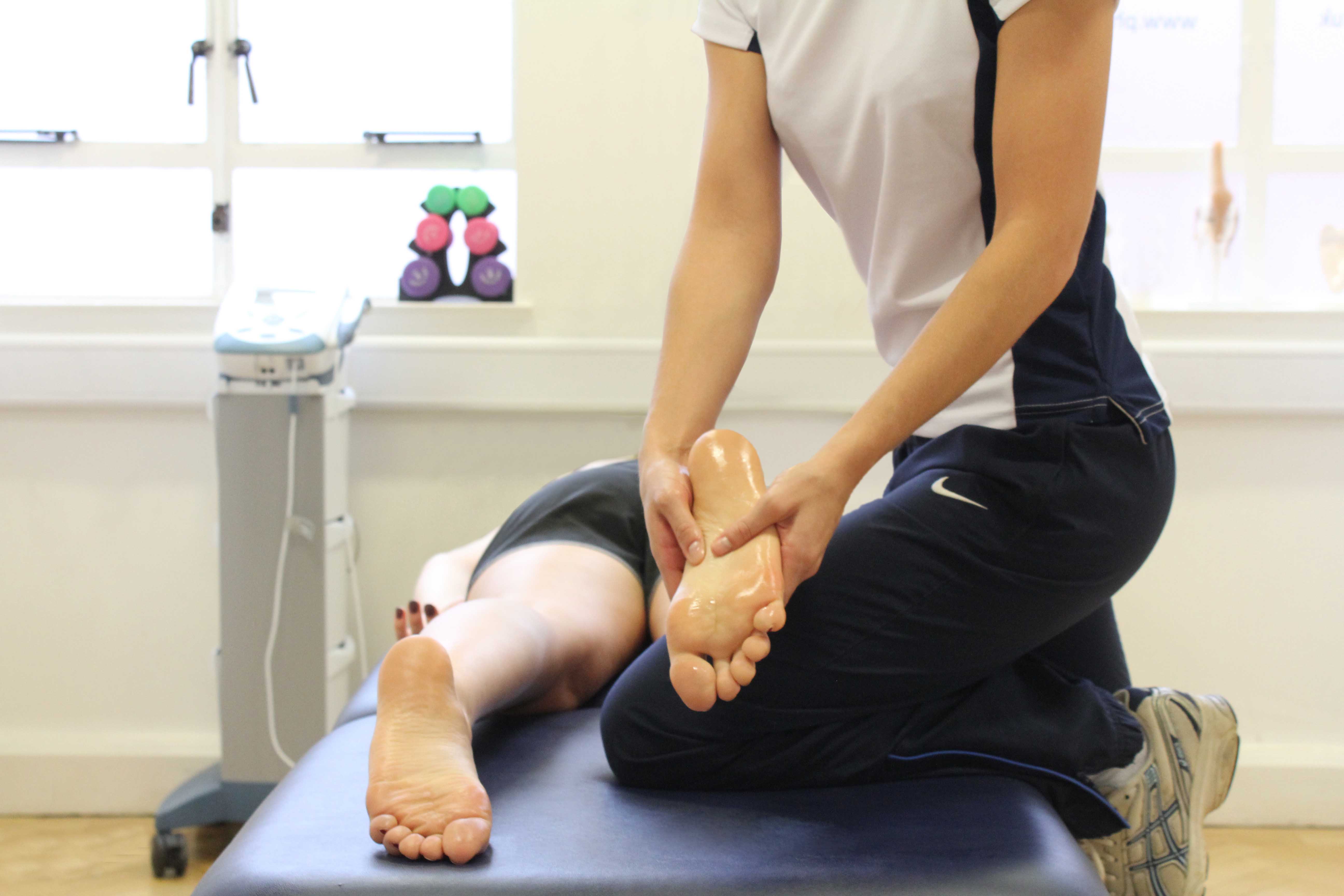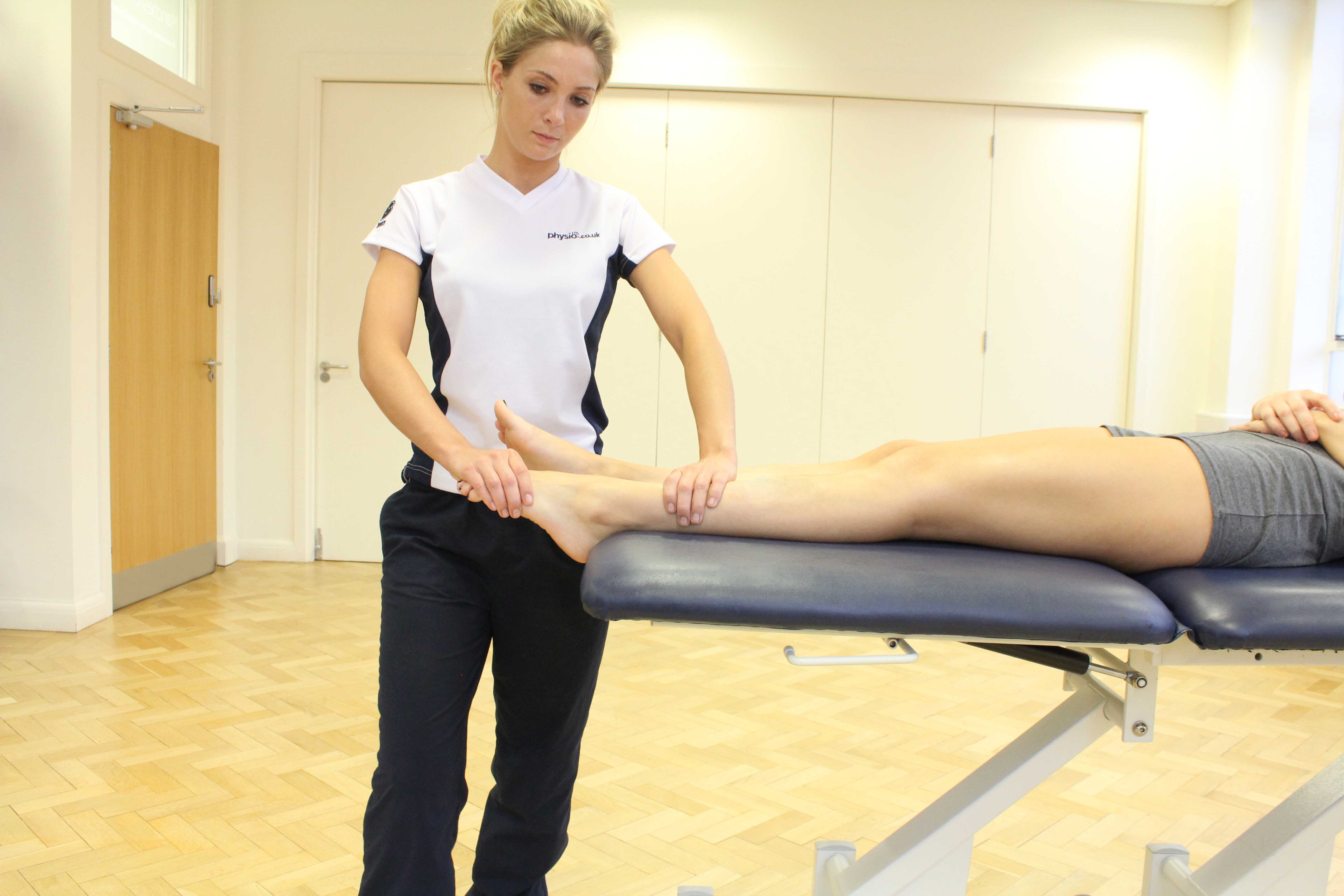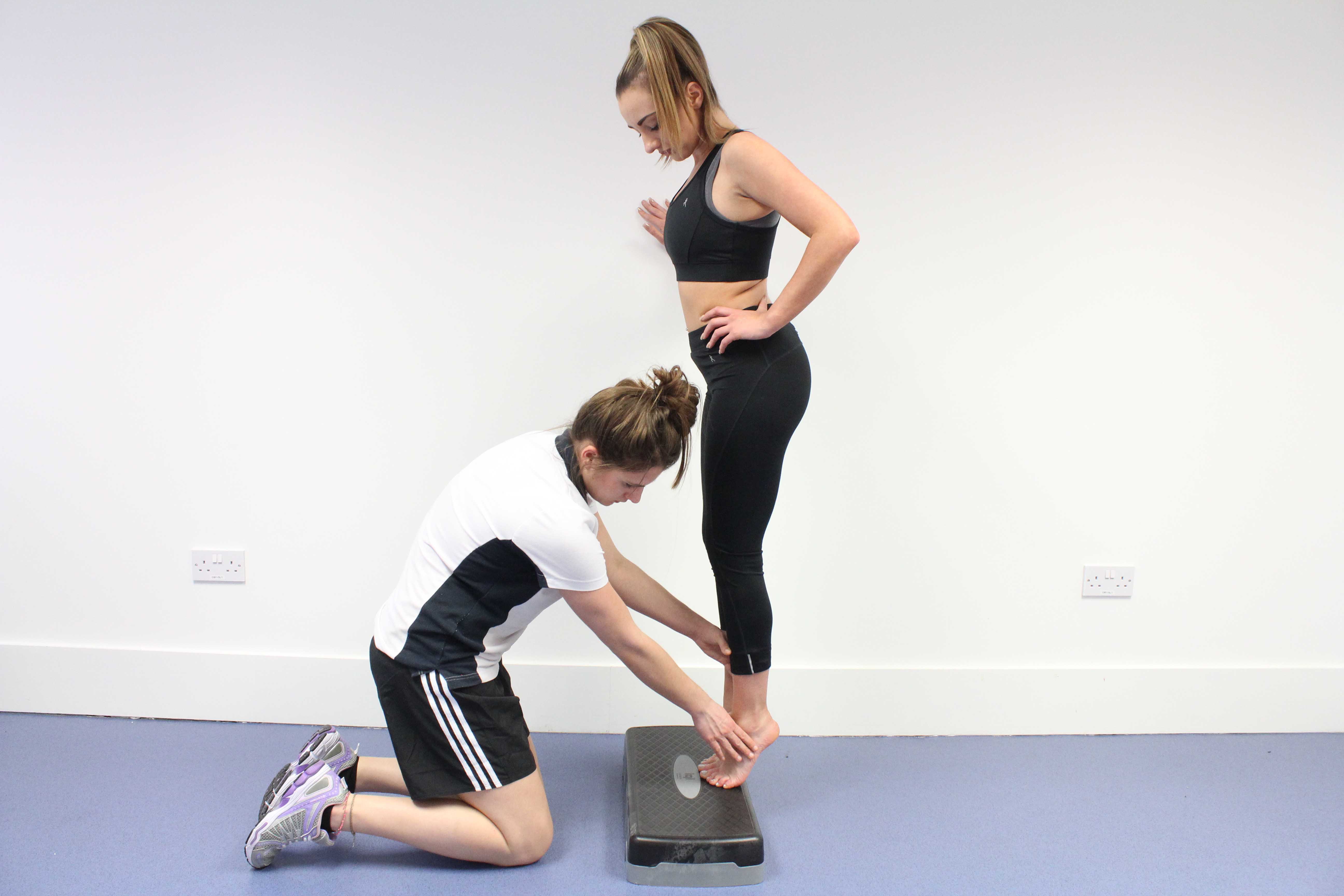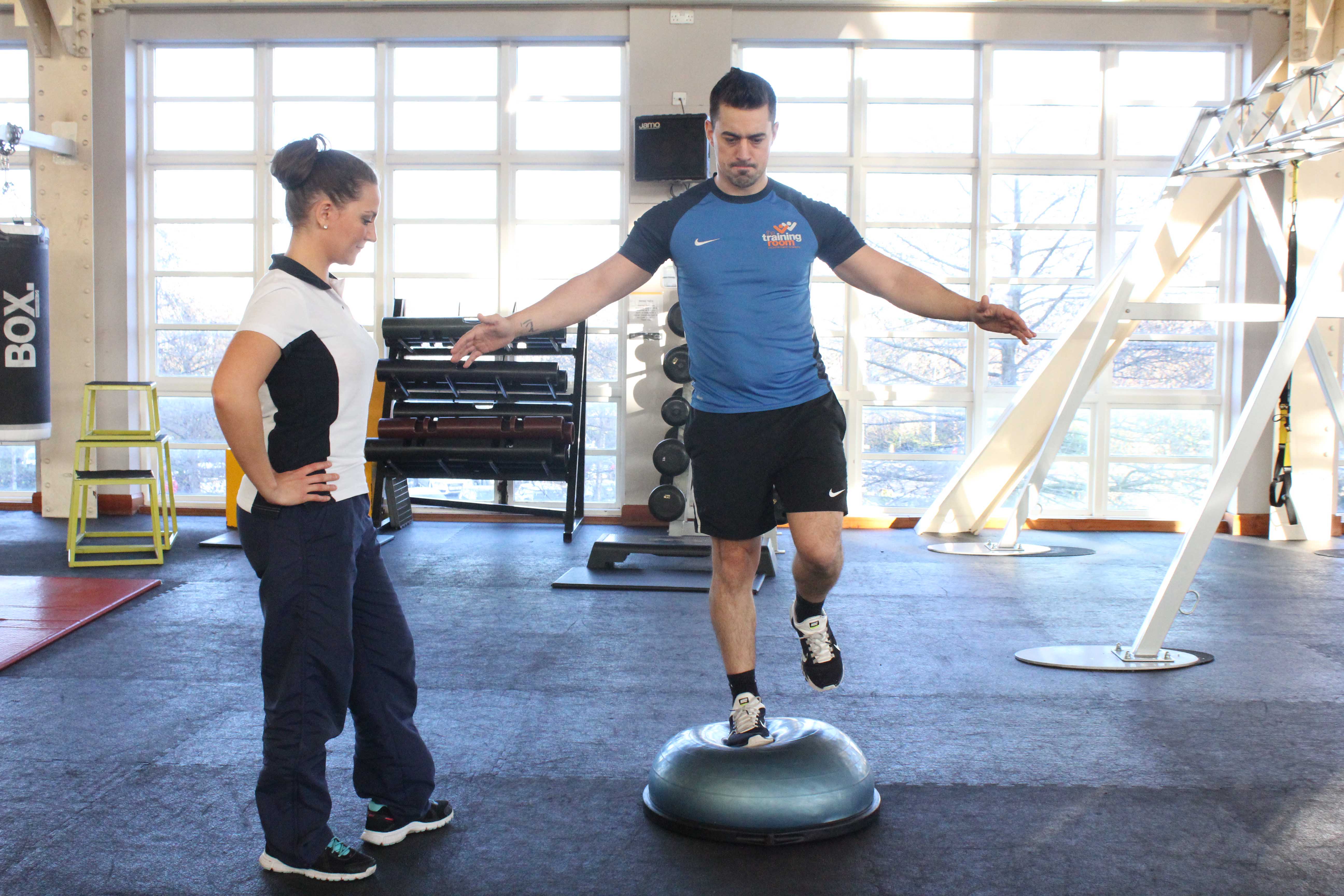Heel spur surgery
Heel spur surgery is used to treat plantarfaciitis and associated heel spurs.
Plantarfaciitis is an inflammation of the plantarfascia that results in pain. The plantarfascia is the main ligament to runs along the bottom of the foot from the heel to the toes. Amongst other functions this ligament helps to support the arch of the foot. This ligament is subject to a lot of stress and strain during standing, and more during walking. The ligament can become so tight it pulls on the heel bone, resulting in a heel spur.
 Above: Soft tissue massage of the planta fascia under the foot
Above: Soft tissue massage of the planta fascia under the footPlantarfaciitis usually gets better with rest and non-surgical management, however should the pain continue or progress to a heel spur, heel spur surgery may be the only option.
Heel spur surgery can take a variety of approaches:
- Detaching entire plantarfascia from heel bone to relieve tension - with guidance from inserted camera (Endoscopic plantar fasciotomy)
- Heel spur itself is removed (inferior calcaneal exostectomy)
- Portion of plantarfascia detached
 Above: Passive stretch of the connective tissues in the foot
Above: Passive stretch of the connective tissues in the footPhysiotherapy prior to heel spur surgery
To try and reduce the pain and avoid surgery, Physio.co.uk will create a personalised exercise programme for plantarfaciitis that includes:
- Stretching of plantar fascia, Gastrocnemius and Soleus
- Massage
- Strengthening for intrinsic muscles of the foot
- Taping
- Advice regarding appropriate footwear
- Pain control
- Ice therapy (Cryotherapy)
- Active exercise programme
Physiotherapy is important following surgery to reduce pain and swelling, and get you back up on your feet.
 Above: Progressive strengthening exercises for the foot and ankle
Above: Progressive strengthening exercises for the foot and ankleSymptoms after heel spur surgery
As the heel bone provides the attachment for the plantar fascia, fallen arches are a common consequence of surgery. Immediately following surgery, you will experience pain round the scar site, but this should be controllable with prescribed pain relief medications.
Physiotherapy after heel spur surgery
Physiotherapy following surgery will depend on the type of operation performed.
0-1 weeks Immediately following surgery you will be recommended to rest with your foot elevated and apply ice (Cryotherapy). Although you will be able to walk on your foot this should only be done for short periods such as nipping to the toilet or to get food. During this time off your feet, our physiotherapists will be able to provide you with an exercise programme that will work on keeping the strength and range of movement in your other joints (hips, knees).
1-2 weeks Physio.co.uk will encourage you to get up and moving during this period, however it is important you take it steady and don’t do too much as walking is stilllikely to be painful. Our physiotherapists will be able to introduce exercises to regain movement in the joints of the foot and ankle, whilst also being able to teach you techniques to help scar-site healing (for example self massage).
2-3 weeks Within this period our physiotherapists will begin to work on perfecting your walking technique. Most of the pain should have subsided by now and therefore it should be possible to begin wearing supportive footwear again. If you previously wore orthotics it is advised you return to wearing these as soon as they are comfortable (particularly if you have had bone spur removal surgery alone – as this has not removed the cause of your plantarfasciitis).
3 weeks + Now you’re up and walking our physiotherapists will begin to focus on the more complicated everyday tasks such as walking up and down the stairs, driving or dealing with uneven terrain. Physio.co.uk will work with you in creating a program to address any outstanding concerns and set short-term goals on the road to addressing them.
 Above: Stability and strengthening exercises for the foot and ankle
Above: Stability and strengthening exercises for the foot and ankleSummary
The main ligament that creates the arch beneath the foot can sometimes become painful and inflamed (Plantarfasciitis). As the ligament pulls on its attachment at the heel bone, a lump is often formed (heel spur). Non-surgical treatment is usually very successful in resolving the symptoms of plantarfasciitis, but in severe cases surgery is used as a last resort. There are different types of surgery; some relieve the tension within the plantarfascia, whereas others remove the bony spur itself. Physiotherapy is important following surgery, both in speeding up recovery and preventing reoccurrences of pain. Our physiotherapists are able to start work straight away on the unaffected joints and when pain allows will work on enhancing range of movement and strength in the affected joint so you are able to return to full function within everyday life.
Call Physio.co.uk now on 0330 088 7800 for more information or to book an appointment please contact us.

 0330 088 7800
0330 088 7800

































